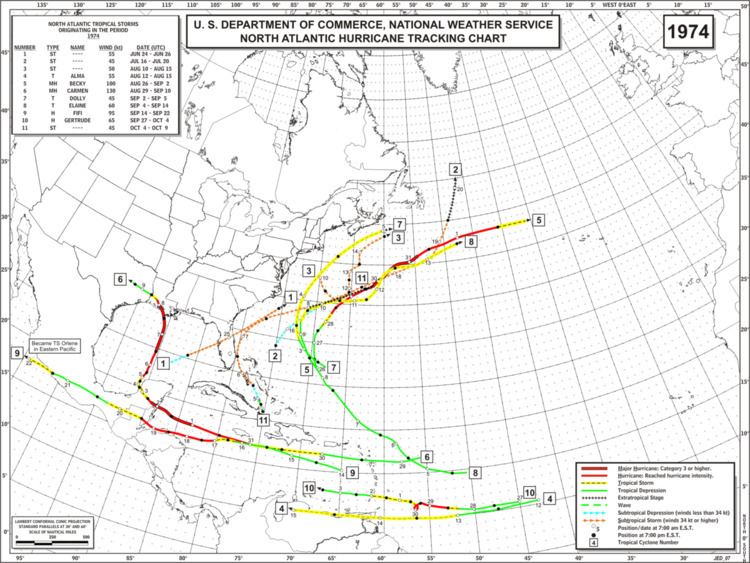 | ||
The 1974 Atlantic hurricane season is one of the deadliest Atlantic hurricane seasons with more than 6,000 dead. During the season, twenty tropical or subtropical depressions formed, of which eleven reached tropical storm intensity. Four of those tropical storms became hurricanes and two of those became major hurricanes. The season officially began on June 1, 1974, and ended on November 30. These dates typically limit the period of each year when most tropical cyclones form in the eastern North Atlantic hurricane basin. This timeline documents all the storm formations, strengthening, weakening, landfalls, extratropical transitions, as well as dissipation. The timeline also includes information which was not operationally released, meaning that information from post-storm reviews by the National Hurricane Center, such as information on a storm that was not operationally warned on, has been included.
Contents
The first storm of the season, Tropical Depression One, formed on June 22. The final storm of the season, Tropical Depression Seventeen, dissipated on November 11. There were twenty tropical cyclones during the season. Of these, four were subtropical storms, and sixteen were tropical. Of these tropical systems, four became hurricanes; two of those reached Category 3 intensity or higher on the Saffir-Simpson hurricane scale. Hurricane Carmen threatened two major cities during its duration, Belize City, Belize and New Orleans, Louisiana, but veered away at the last moment. Hurricane Fifi is among the deadliest storms in the Atlantic Basin with fatality estimates ranging from 6,000 to 8,000.
